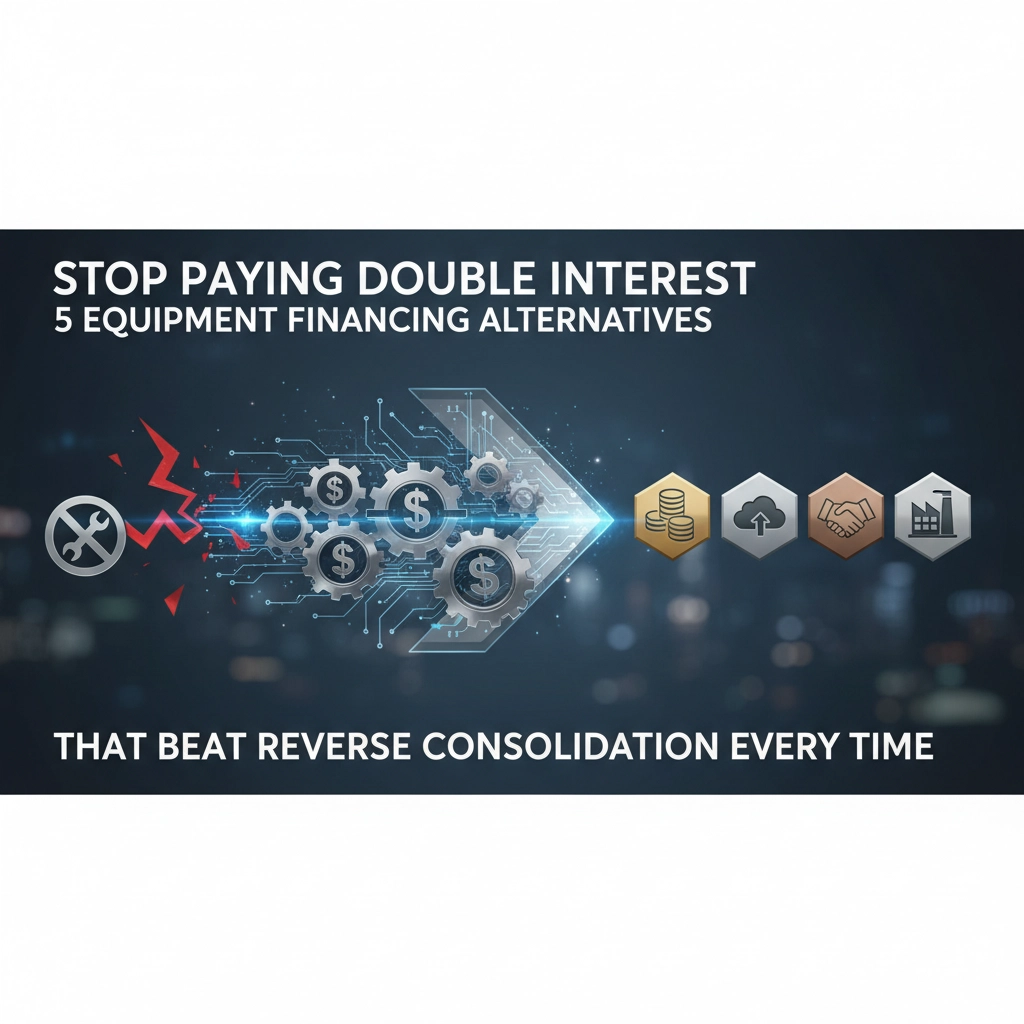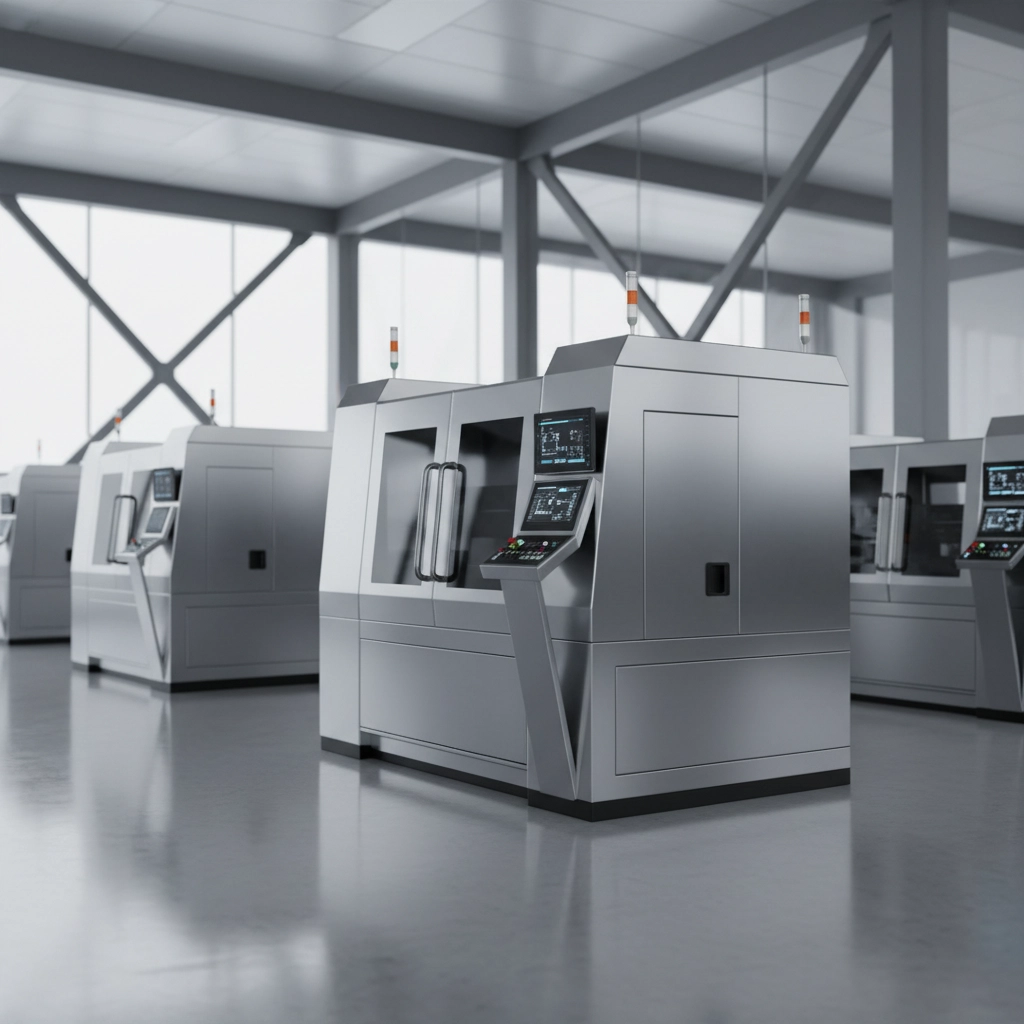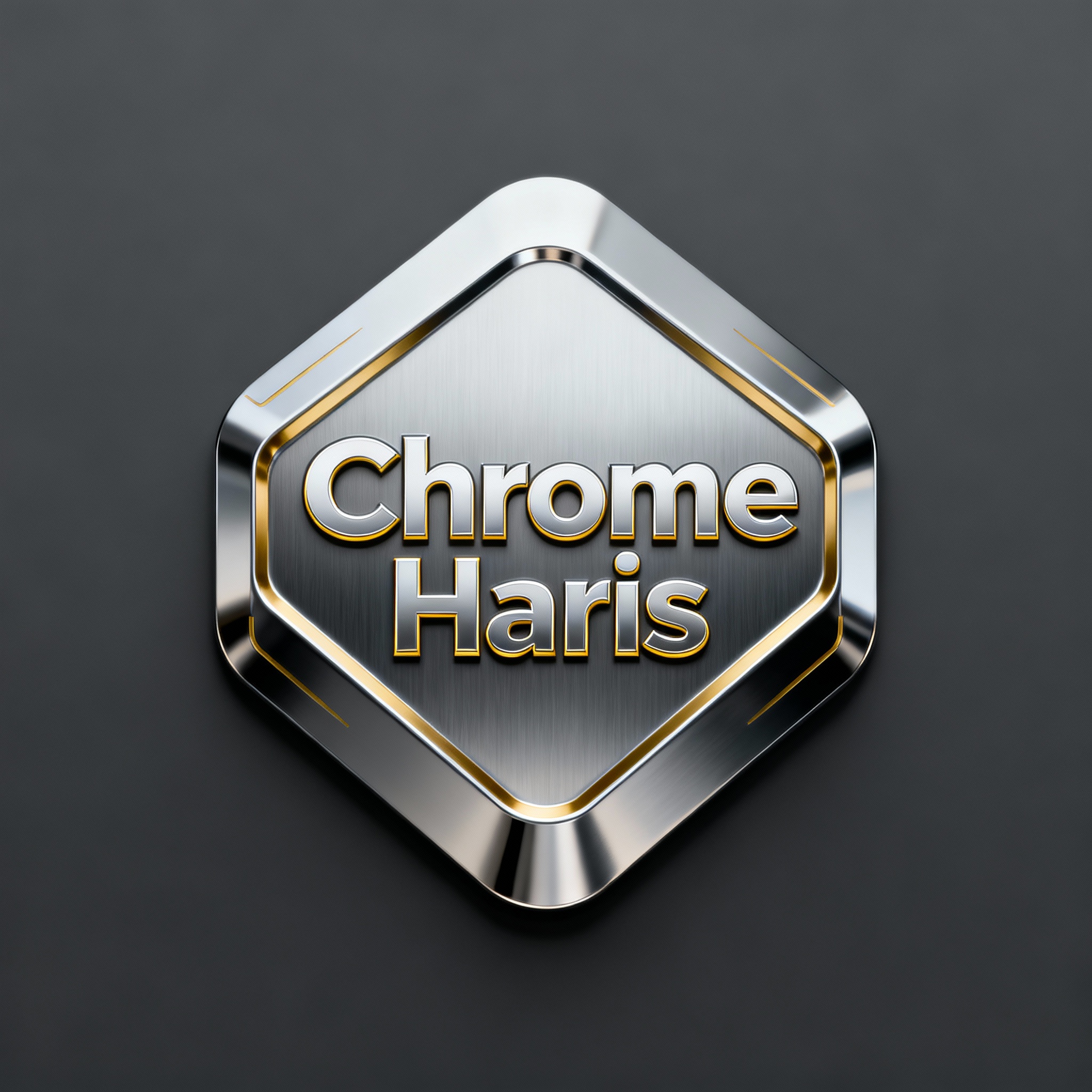Stop Paying Double Interest: 5 Equipment Financing Alternatives That Beat Reverse Consolidation Every Time

If you're considering reverse consolidation to escape high-cost merchant cash advances or equipment debt, you're about to make an expensive mistake. Reverse consolidation sounds appealing: take out new financing to pay off existing debt: but it often traps businesses in a cycle where they're paying interest on top of interest, extending payment timelines and draining cash flow without providing real relief.
The harsh reality? Most reverse consolidation products carry their own high costs, overlapping payment obligations, and extended terms that end up costing significantly more than your original debt. Instead of falling into this financial quicksand, smart business owners are turning to proven equipment financing alternatives that preserve working capital, reduce overall costs, and provide clear paths to financial stability.

Suggested Image 1: Business owner reviewing financial documents at a clean desk, showing focused decision-making
Asset-Based Term Loans: Turn Your Equipment Into Lower-Cost Capital
Asset-based term loans leverage your existing business assets: equipment, inventory, or receivables: to secure traditional financing at dramatically lower rates than consolidation products. While merchant cash advances can carry effective APRs exceeding 300%, asset-based loans typically range between 8-25% APR, representing massive savings on your borrowing costs.
Here's how it works: The equipment you're financing serves as collateral, creating an asset-centric approach that reduces lender risk without requiring additional personal guarantees. This means you can completely pay off expensive existing obligations while establishing a single, manageable payment structure with a clear end date.
Real-world scenario: A manufacturing company owing $75,000 across three different MCAs with daily payments totaling $1,200 could secure a $75,000 asset-based term loan at 18% APR. Instead of paying roughly $312,000 over 18 months through the MCAs, they'd pay approximately $89,000 over 60 months: a savings of over $220,000.
The key advantage? You're building equity in real assets while paying down debt, rather than throwing money at high-cost financing with no collateral value.
Equipment Lines of Credit: Flexibility That Traditional Loans Can't Match
Equipment lines of credit function like business credit cards but with significantly lower interest rates due to collateral backing. You receive a set credit limit that can be drawn from as needed, paying interest only on the amount actually used.
This structure provides two critical benefits over reverse consolidation:
- Revolving credit: As you pay down the balance, your available credit replenishes, creating an ongoing resource for equipment needs
- Interest savings: You only pay for what you actually use, not a lump sum sitting in your account
The secured nature of these lines typically qualifies you for rates between 10-20% APR, compared to the 40-200% effective rates common in consolidation products. Plus, funding is specifically restricted to equipment purchases, which prevents the temptation to use proceeds for non-productive expenses.
Practical application: A restaurant chain needing kitchen equipment throughout the year could establish a $200,000 equipment line of credit. They draw $50,000 in January for new ovens, pay interest only on that $50,000, then draw another $30,000 in March for refrigeration units. This approach provides flexibility while keeping borrowing costs tied to actual usage.

Suggested Image 2: Modern equipment or machinery in a professional business setting, emphasizing the value of business assets
Direct Equipment Financing: Streamlined Solutions Without Bank Bureaucracy
Direct equipment financing through specialized providers offers streamlined approval processes and tailored solutions that traditional bank loans simply cannot provide. These alternative funding sources maintain more lenient eligibility requirements and faster approval timelines, often providing capital access within 24-48 hours when time-sensitive opportunities arise.
The flexibility extends beyond approval speed. Direct equipment financiers can negotiate:
- Seasonal payment schedules aligned with your revenue cycles
- Quarterly payments for businesses with irregular cash flow
- Skip payment options during slow periods
- Step-up or step-down payment structures
Rather than making substantial upfront payments or getting locked into rigid bank terms, you spread costs over manageable timeframes while preserving working capital for day-to-day operations, unexpected expenses, or strategic investments.
Consider this advantage: Instead of depleting your cash reserves to escape MCA debt, direct equipment financing allows you to acquire necessary assets while maintaining financial flexibility. A construction company could finance a $150,000 excavator with no money down, then use the increased capacity to generate revenue that pays for the equipment.
Direct Negotiation: The Overlooked Alternative That Costs Nothing
Many businesses overlook the most straightforward alternative: negotiating directly with their current merchant cash advance or equipment financing companies. MCA lenders will often restructure payments when approached professionally, and temporary payment reduction proves far more beneficial than taking on new debt at predatory rates.
The negotiation process involves three key steps:
- Calculate your true position: Document total remaining balances, current payment burden, and projected payoff timeline
- Propose structured relief: Request temporary payment reductions for 30-60 days, extended payment terms with fixed end dates, or lump sum settlements for less than full balance
- Get agreements in writing: Ensure any modifications are properly documented to prevent future disputes
Success example: A retail business paying $2,800 daily across multiple MCAs negotiated a 60-day payment reduction to $1,400 daily, then resumed normal payments. This $84,000 cash flow improvement allowed them to stabilize operations without adding new debt layers.
This approach addresses immediate cash flow concerns without unnecessarily extending payment timelines or adding complexity to your financial structure.

Suggested Image 3: Two business professionals having a productive discussion across a conference table, representing negotiation and partnership
Revenue-Based Financing: True Flexibility With Transparent Limits
Unlike merchant cash advances that masquerade as revenue-based products, legitimate revenue-based financing includes caps on total payback amounts and reasonable cost structures. This distinction is critical: while MCAs can result in unlimited payment obligations, true revenue-based financing programs establish clear limits on what you'll ultimately repay.
Payments fluctuate with your actual revenue, providing breathing room during slower periods while accelerating payoff during profitable months. The transparency and predictability of capped repayment amounts allow for accurate financial planning, something impossible with open-ended consolidation arrangements.
Key differentiators of legitimate revenue-based financing:
- Total payback caps (typically 1.2-1.5x the advance amount)
- Transparent cost structures with clear terms
- Flexible payment adjustments based on actual revenue
- No personal guarantees or collateral requirements
Scenario comparison: A seasonal business receiving a $100,000 revenue-based advance with a 1.4x payback cap knows they'll pay a maximum of $140,000, regardless of how long it takes. Compare this to MCA stacking or reverse consolidation, where costs can spiral indefinitely without clear endpoints.
Making the Smart Choice: Evaluation Framework
When evaluating these alternatives, focus on three critical factors:
Total cost of capital: Calculate the true cost including interest rates, fees, and total repayment amounts. Even equipment financing at 25% APR represents substantial savings compared to stacked consolidation debt.
Cash flow impact: Consider how payment structures align with your business cycles. Seasonal businesses need different solutions than companies with steady monthly revenue.
Strategic value: Choose financing that builds business value, not just provides temporary relief. Equipment financing creates assets, while consolidation often just shuffles debt around.
Equipment financing interest rates typically range from 4% to 45% APR, with potential origination fees between 0.5% and 4% of the loan amount. However, even higher-end rates represent substantial savings compared to reverse consolidation, plus you gain tax benefits through interest deductions and potential depreciation write-offs.

Suggested Image 4: Small business owner working confidently in their operational space, showing success and forward momentum
Your Path Forward: Break Free From the Debt Trap
The equipment financing alternatives outlined here offer genuine solutions that preserve working capital, reduce overall costs, and provide clear paths to financial stability. You're not stuck with expensive consolidation products or endless MCA cycles: proven alternatives exist that successful businesses use every day.
The key is understanding your true position, evaluating options based on total cost and strategic value, and choosing solutions that build long-term business health rather than just providing temporary relief. Whether through asset-based lending, equipment lines of credit, direct financing, successful negotiation, or legitimate revenue-based products, you have the power to break free from costly debt cycles.
Don't let another day pass paying double interest on consolidation products that extend your financial obligations without creating real value. Take control of your equipment financing strategy and set your business up for sustainable growth and profitability.
Your business deserves better than expensive band-aid solutions: it deserves financing that works as hard as you do.
